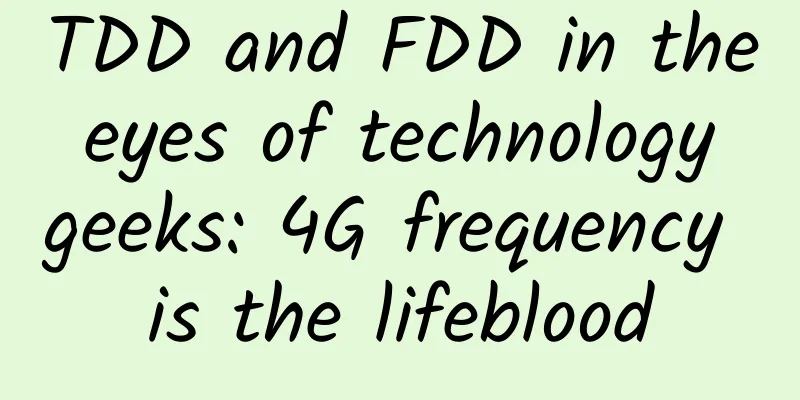Wang Peng of Yihui Zhongmeng: Offline big data - the next outlet for intelligent technological innovation

|
[51CTO.com original article] The WOT 2016 Big Data Technology Summit hosted by 51CTO.com was held at the Beijing JW Marriott Hotel on November 25-26, 2016. Since 2012, the WOT brand conference has been successfully held for 12 sessions with the concept of "focusing on technology and serving technical personnel". It has not only accumulated a large number of expert resources, but also won the recognition and praise of IT practitioners and technology enthusiasts, and has become an important technology sharing and networking platform in the industry.
Wang Peng is the technical director of the Big Data Department of Beijing Yihui Zhongmeng Network Technology Co., Ltd. He has eleven years of experience in the industry, seven of which were spent in R&D and multicultural team management for multinational companies (American and Japanese). He joined Zhongmeng in 2014 and is responsible for the Server team, Windows team and innovative project incubation. He currently leads the Zhongmeng Big Data team, focusing on the storage, analysis and mining of massive data. Big data has been a term for a long time, but is it getting further and further away from us? The big data we usually talk about is obtained online, but today we are going to talk about the story of offline big data. In 2016, the number of active mobile devices reached 1.6 billion. In the era of mobile Internet, people's daily lives have been closely tied to smart devices. Mobile phones, watches, bracelets, etc., all these smart devices are carrying and describing people's data information, which is collectively called offline big data. Online big data is a product of the PC era, obtained through computers, communications and consumer products, while data in the mobile Internet era depends on offline big data to shine. Teacher Wang Peng asked the reporter a question: Are people more likely to buy cars by searching for luxury cars online or by going to 4S stores to look at cars? Offline big data is an information basis that can capture the real actions of users. It can gain insight into the actual needs of consumers and meet these needs. This is also the accuracy of offline big data. Although there is a big difference between online data and offline data, the two sides are not opposite, but complementary. For current corporate promotion, the effective combination of offline big data and online big data is a complete promotion system. This multi-dimensional combination will make the data more accurate and targeted and produce more effective promotion effects. For offline big data, it must accumulate to a certain level to effectively match user needs, but this accumulation process is long-term and costly; on the other hand, there are many styles of offline big data, and the data units are also different. There is no clear collection standard at present; in the PC era, it is enough to collect basic online data, but in the mobile Internet era, in addition to online data, there are also mobile phones and various wearable devices, and the amount of data generated is far greater than that of online. As more and more wearable devices penetrate into users' lives, offline big data will surely usher in explosive growth. ZMENG was founded in 2013, focusing on offline consumer big data. From the steady accumulation of offline big data in the early stage to providing enterprises with precision marketing and big data application services based on smart hardware and big data technology, ZMENG has experienced the whole process of continuous expansion of offline big data volume and construction of user closed-loop system. "When we first did offline big data, we thought that the share of independent devices would be about tens of millions or more. After the test, we found that there were 800 million. Later, the survey showed that the average person would change the device after using the mobile device for 1.5 years or 2 years. 800 million mobile devices in 3 years are not a lot, but this also strengthened our determination to do offline big data." Up to now, ZMENG has the largest offline database system in China, including more than 200,000 national cooperative merchants, 400,000 data hotspots covering more than 300 cities, a total of more than 800 million independent mobile device offline data, and 1000+ crowd tags generated by real-time docking with more than 3 billion online data, which laid a solid foundation for the segmentation and portrait description of the crowd for ZMENG to provide big data application services. Wang Peng also said that ZMENG's unique big data collection patent technology and perfect information processing system not only protect the privacy of user data but also solve the problem of data security. For ZMENG, connecting offline and online data to provide users with more effective mobile precision marketing solutions is the key at the moment. We believe that in the near future, the combination of offline big data and online big data in more dimensions will bring more new experiences and surprises to people's lives, which is what we look forward to. [51CTO original article, please indicate the original author and source as 51CTO.com when reprinting on partner sites] |
<<: Writing a JavaScript framework: better timed execution than setTimeout
>>: The road to decoupling mobile Tmall
Recommend
Introduction to the Systematization of Portrait Photography Post-production
Introduction to the systematic entry resources fo...
Explain the 4 models of private domain traffic in 10 minutes
" Private domain traffic " is the hotte...
Tips for promoting products on Xiaohongshu!
Tips for promoting products on Xiaohongshu : How ...
91 Ten Articles: Ping An suspends new Tesla insurance, and Ideal Auto is going to compete head-on with Huawei
1. After a series of car crashes, some provinces ...
Is tomato a vegetable or a fruit? Let’s start with a strange case…
In 1893, the U.S. Supreme Court heard a peculiar ...
The person who invented frying is such a genius. Can icicles and beer be fried?
As the weather gets colder, many people fall in l...
In-vehicle operating system: the foundation of the newly defined software architecture of automobiles
We have released the eighth article in the series...
What do the Tik Tok short video tags mean? How to quickly tag on Tik Tok?
With the explosive popularity of short videos on ...
"Being the heroine of a 1-hour idol drama", 3 revelations behind 2.34 million viewers
Most of us exist in social networks. In some even...
Tik Tok Operation Toolkit from Beginner to Master
Introduction to the Douyin Operation Toolkit: Cou...
Others with 0 followers can easily get 100,000 likes on Douyin. What is Douyin’s recommendation algorithm?
Tik Tok 's decentralized algorithm gives ever...
Google is testing variable refresh rate (VRR) support for Chrome OS
Google is testing support for variable refresh ra...
Stay away from big trucks! The driver really can't see you!
Audit expert: Zhu Guangsi Member of Beijing Scien...
How to do competitive product analysis? 4 elements + 6 core methodologies to teach you how to quickly master the essence of competitive product analysis
When we get involved in competitive product analy...
How does brand advertising stimulate users' impulse to buy?
In this article, I will talk about the impact of ...









